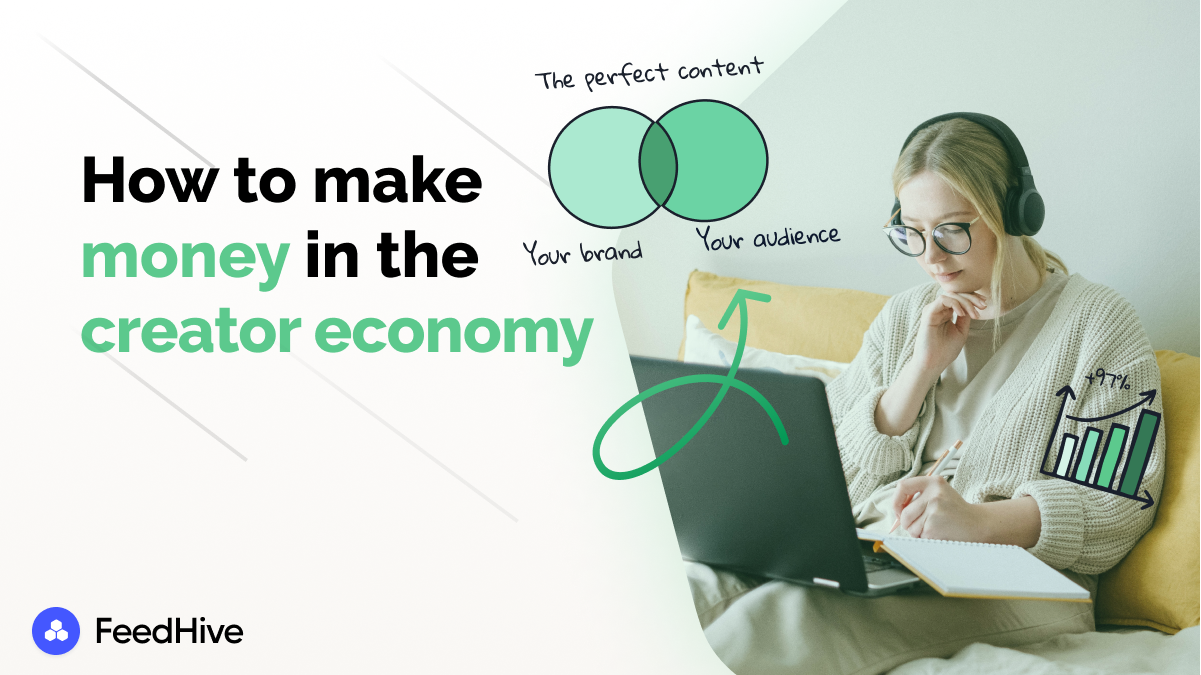
The creative economy has established itself as a vibrant and profitable sector, altering how people make a livelihood. Content producers use their talents and interests to develop online companies and connect with audiences worldwide as digital platforms thrive.
Traditional job routes are changing in the digital era as people use their creativity to become content producers, influencers, and online business owners. Creators may need to learn how to make money in the creator economy to reach their full potential.
In today's digital age, the creator economy refers to the ecosystem in which people use their creative abilities and skills to create, share, and monetize material. It includes a broad spectrum of content producers from many platforms and niches, such as YouTubers, podcasters, influencers, authors, artists, and more.
By passing conventional gatekeepers, the economy's creators have a direct line to their audience and can provide content according to their preferences. They can interact with and have an impact on their followers, often building caring communities around their work.

A wide variety of genres, including tutorials, vlogs, games, and more, are produced by YouTube producers. They have amassed a sizable following, drawing millions of viewers and bringing in large sums of money via item sales, brand alliances, and ad monetization.
The popularity of podcasting has soared, giving artists a forum to publish audio material on various subjects. Through sponsorships, commercial placements, and crowdfunding, podcasters build devoted listenership and profit from their programs.
Influencers use their social media followings and online presence to spread the word about businesses, goods, and services. They monetize their influence via commercial partnerships, sponsored content, and affiliate marketing.
Articles, blogs, e-books, and other written material are all produced by writers and bloggers. Ad revenue, sponsored content, freelance writing, and the sale of their publications are all ways they may make money.
Visual artists, photographers, designers, and other creatives exhibit their work online to get exposure and sell it via various channels, including commissions, licensing agreements, and online markets.
In the creator economy, creators have many monetization options and tactics to generate income. Individuals with creative abilities and a love for content production have discovered the unheard-of potential to transform their talents into successful companies in this dynamic and always-changing digital world.
Consider ad income as your content's online wage. Creators have the potential to make money by having advertisements appear alongside their material on websites, podcasts, and platforms like YouTube. All you need is to know how to join the Creator economy.
Promoting goods or services via specific affiliate links is known as affiliate marketing. Many creators use their influence to promote goods and services they believe in and profit from the sales they help generate.
There are several opportunities for revenue generation while working with brands and serving as their dependable spokesperson. As a creator, you may use your credibility and influence to market goods and services that fit your writing and appeal to your readers.
Creators who want to share their expertise, interact with their audience in person, and make money from ticket sales or registration fees may consider hosting live events, seminars, or master classes. These events, a conference, a creative retreat, or a specialized workshop, enable artists to provide distinctive experiences and monetize their subject matter knowledge.

One common strategy used by producers to monetize their brand and interact with their audience is selling products. It includes developing and marketing branded goods, including clothing, accessories, and other things that appeal to their target market.

Digital goods like e-books, online courses, tutorials, templates, or presets may be produced by creators and sold. You can provide value to your audience and profit from selling these digital items by sharing your knowledge and experience in an organized style.
Through the direct support of their audience, artists may finance their projects or maintain their creative activities through crowdfunding sites. Crowdfunding enables your audience to take an active role in your success, whether you're raising money for a new book, record, or even a charity cause.

A strategic strategy and a thorough comprehension of the distinctive characteristics of the creative economy are essential for marketers to navigate the world of creators successfully. It is crucial to understand how to use the creator economy as a marketer to monetize.
While 41% of marketers want to promote their brand values, more than half (52%) depend on artists to improve their social community. As mentioned by 16% of respondents, one aim for their creator strategy, creators may even help change how your audience perceives your business.

To engage creators and increase the effectiveness of your marketing initiatives, follow these key steps-
Conduct in-depth research to find content producers whose work complements your brand and appeals to your target market. To locate the best creators for your campaigns, use influencer discovery platforms, social media search tools, and sector insights.
Approach artists with a sincere desire to cooperate with them and an interest in their work. Make an effort to interact with their material, offer thoughtful comments, and build a friendship based on respect for one another.
Your marketing goals and the results you want to achieve by working with creators should be clearly stated. Understanding your objectives will enable you to choose the best designers and develop successful advertising tactics.
Allow the creators to keep their voice and style to respect their creative liberty. Work together to create original ideas that complement their content and appeal to their audience.
Inform the developers of your brand standards, campaign goals, and unique demands or limitations. Clearly outline the objectives, deadlines, and contractual commitments to guarantee successful cooperation.
To measure the effectiveness of your marketing, use key performance indicators (KPIs) to evaluate the effectiveness of your partnerships; keep an eye on measures like engagement rates, reach, conversions, and sentiment analysis.
Think about establishing long-term relationships with artists whose principles coincide with your brand. Collaborations that last a long time increase brand loyalty and provide constant exposure.
Thanks to the creator economy, people may monetize their creative abilities in various ways. Artists may make money and build successful enterprises by experimenting with different monetization techniques. Success in the digital era may be attained by seizing the chances presented by the creative economy.